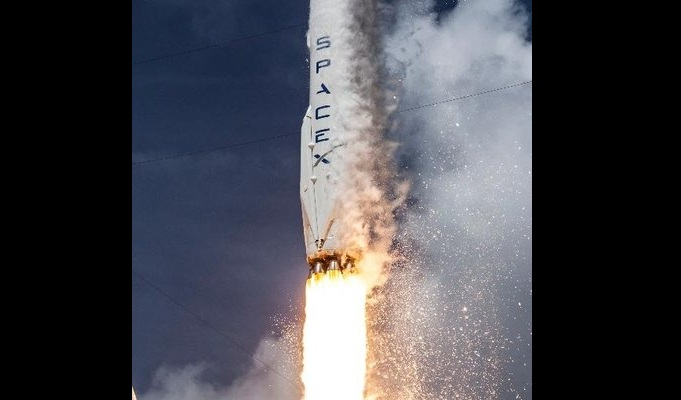
Astronauts aboard the International Space Station (ISS) were set to receive 2,630 kg of research, crew supplies and hardware after NASA's cargo provider SpaceX launched a commercial resupply mission.
On Monday, the SpaceX Dragon lifted off on a Falcon 9 rocket from Space Launch Complex 40 at Cape Canaveral Air Force Station in Florida with a delivery of experiments dealing with how the human body, plants and materials behave in space.
The supplies will support dozens of the more than 250 investigations aboard the space station.
Japan Aerospace Exploration Agency astronaut Norishige Kanai and NASA's Scott Tingle will use the space station's robotic arm to capture Dragon after its scheduled arrival at the station on Wednesday.
The spacecraft will spend approximately one month attached to the station and then return to Earth in May with some results of completed experiments, NASA said in a statement.
Among the research arriving on Dragon is a new facility to test materials, coatings and components, or other large experiments, in the harsh environment of space.
The Materials ISS Experiment Flight Facility (MISSE-FF) provides a platform for testing how materials react to exposure to ultraviolet radiation, atomic oxygen, ionising radiation, ultra-high vacuum, charged particles, thermal cycles, electromagnetic radiation and micro-meteoroids in the low-Earth orbit environment.
The Canadian Space Agency's study "Bone Marrow Adipose Reaction: Red or White (MARROW)" will look at the effects of microgravity on bone marrow and the blood cells it produces - an effect likened to that of long-term bed rest on Earth.
Understanding how plants respond to microgravity also is important for future long-duration space missions and the crews that will need to grow their own food.
The Passive Orbital Nutrient Delivery System (PONDS) arriving on Dragon uses a newly-developed passive nutrient delivery system and the "Veggie" plant growth facility currently aboard the space station to cultivate leafy greens.
These greens will be harvested and eaten by the crew, with samples also being returned to Earth for analysis, NASA said.
Dragon also is carrying an Earth observatory that will study severe thunderstorms and their role in the Earth's atmosphere and climate, as well as upgrade equipment for the station's carbon dioxide removal system, external high-definition camera components, and a new printer for the station's crew.
This is SpaceX's 14th cargo mission to the space station under NASA Commercial Resupply Services contract. (IANS)








